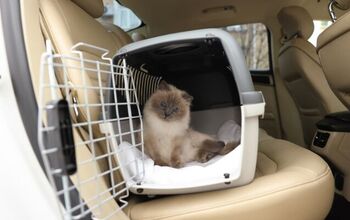German Pinscher


About German Pinscher
The German Pinscher comes from a long line of German breeds and it was actually used in the development of many other breeds including the Doberman Pinscher, the Rottweiler, and the Affenpinscher. When you see this medium-sized breed you may be tempted to think that he is a friendly, easy-going breed. While the German Pinscher is in fact a loving and loyal companion, he is also intelligent and has strong protective instincts. If you are looking for a smart, loyal guard dog that will also do well with family, the German Pinscher may be a good breed to consider.
The German Pinscher comes from a long line of German breeds.
The breed currently known as the German Pinscher was at one time known as the Smooth Haired Pinscher. This breed’s origins go as far back as the late 1700s, though its roots can be traced to early German breeds that existed during the 15th century. During the 1800s, pinschers were widely used to guard coaches and to kill vermin – the modern version of the breed didn’t really emerge until the 1950s when Werner Jung began a dedicated breeding program for the German Pinscher. The breed came to the United States in the 1980s and was accepted by the AKC in 2003.
The German Pinscher was originally born in the same litter as the Standard Schnauzer (which was once known as the Wire Haired Pinscher) and it was originally known as the Smooth Haired Pinscher.
As a medium-sized dog breed, the German Pinscher should be fed a high-quality commercial dog food diet formulated for dogs of its size. Because this breed is a high-energy working breed, however, an active or working breed formula may be more appropriate to meet his needs.
The German Pinscher is a highly intelligent breed that learns quickly.
The German Pinscher is a highly intelligent breed that learns quickly. Because these dogs can sometimes develop an independent streak, however, it is best to start your dog with training as early as possible. You should also plan to use positive-reinforcement training methods and maintain a firm and consistent hand in training throughout the dog’s life. Because these dogs are intelligent and hard-working they generally do well in dog sports – these sports can be a great source of supplemental exercise as well as mental stimulation.
The German Pinscher is a medium-sized breed that typically stands 17 to 20 inches tall and weighs 25 to 45 pounds at maturity.
The German Pinscher is an active and intelligent breed but it also makes a wonderful family pet. These dogs are even-tempered and loyal to family, though they can sometimes be aloof around strangers. The German Pinscher was once used to hunt vermin so these dogs do have a high prey drive – you should be careful about keeping them with cats and other pets. This breed is generally very friendly and they tend to do well with children also, though early socialization and training is recommended to ensure that this becomes true. This breed requires plenty of daily exercise as well as mental stimulation to prevent the development of problem behaviors.
Because the German Pinscher has a fairly small gene pool there are risks for a number of inherited conditions. Some of the health problems to which this breed is prone include hip and elbow dysplasia, cataracts, thyroid disorders, cardiac disease, and von Willebrand disease. Responsible breeding practices are the best way to prevent the passing of these conditions.
The average lifespan for the German Pinscher breed is 11 to 14 years.
As a working breed, the German Pinscher has fairly high needs for exercise. These dogs are very active and require a long daily walk or brisk jog to meet their minimum exercise requirements. This breed also appreciates having a fenced yard in which to run and they enjoy training for various dog sports as well.
The German Pinscher is an active and intelligent breed but it also makes a wonderful family pet.
The German Pinscher belongs to the Working Group for the AKC and the United Kingdom Kennel Club. This breed is also recognized by the United Kennel Club and the FCI.
The German Pinscher is a medium-sized dog that is very similar in appearance to its larger cousin, the Doberman Pinscher. These dogs have short coats and muscular, athletic bodies. The most common colors include black, rust, red, fawn, tan, and blue. Many dogs of this breed are solid brown or black-and-tan in color. These dogs are average shedders and require minimal grooming, though weekly brushing is recommended to keep the dog’s skin and coat in good condition.
The average litter size for the German Pinscher is 6 to 8 puppies. Because this breed has strong protective instincts, early socialization and training is required for puppies to prevent them from becoming too dominant or aloof around strangers. Early training will also help to prevent this breed from developing problem behaviors at an early age.
Photo credit: Jagodka/Bigstock

Kate Barrington is the loving owner of two cats (Bagel and Munchkin) and a noisy herd of guinea pigs. Having grown up with golden retrievers, Kate has a great deal of experience with dogs but labels herself a lover of all pets. Having received a Bachelor's degree in English, Kate has combined her love for pets and her passion for writing to create her own freelance writing business, specializing in the pet niche.
More by Kate Barrington

























